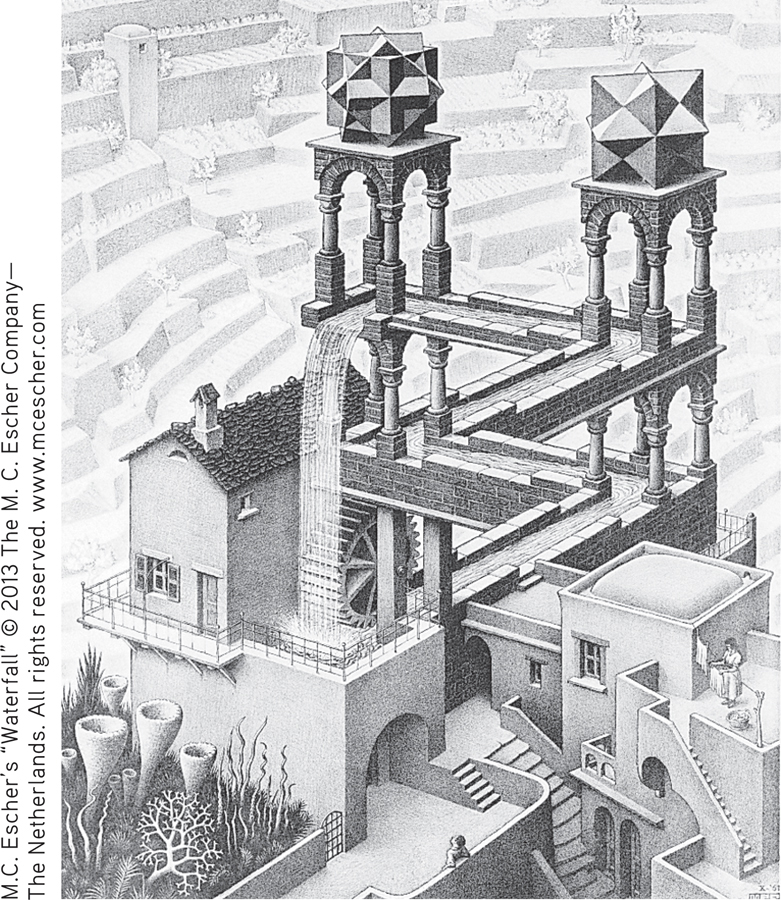
An Impossible Figure: Escher’s Waterfall (1961) Impossible figures are not illusions, but visual riddles that capitalize on our tendency to organize visual elements into a meaningful scene (Ramachandran & Rogers-Ramachandran, 2007). In most paintings, artists use depth and distance cues to create realistic scenes. But Dutch artist M. C. Escher (1898–
M.C. Escher’s “Waterfall” © 2013 The M. C. Escher Company—The Netherlands. All rights reserved. www.mcescher.com